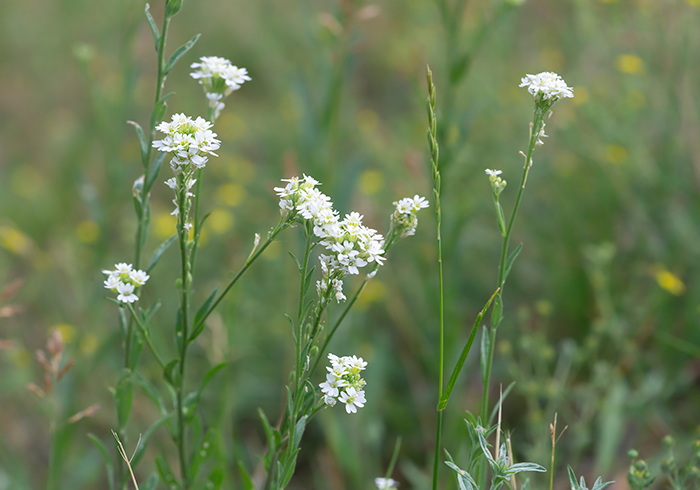
Making hay for horses is a different beast, figuratively and literally speaking. In addition to high quality and color standards, the tolerance and acceptance of toxic plants in horse hay can vary greatly from hay that is marketed to cattle.
In an episode of the “Tack Box Talk” podcast, Kris Hiney with Oklahoma State University Extension and Krishona Martinson with the University of Minnesota discussed the most common weeds found in hay that affect horses. The equine specialists highlighted that toxic plants can be just as problematic in homegrown forages as hay that is shipped across state lines.
“I would strongly encourage horse owners to know what (type of hay) is commonly fed in their area,” Martinson said. “That way, if it’s orchardgrass or alfalfa or red clover or bermudagrass, you have a better chance of identifying when something shouldn’t be there.”
Martinson also noted horses typically avoid toxic plants when grazing pastures; however, their ability to be selective is reduced when they eat hay. For this reason, she encouraged horse owners to be vigilant in hay inspection and keen to symptoms of possible poisoning.
Hoary alyssum. This grayish-green weed can be highly toxic to horses. It has white flowers and produces black, teardrop-shaped seeds in transparent seedpods. Martinson described hoary alyssum to have a stemmy or wiry growth pattern, which makes it easy to identify against legume or grass hay.
Swelling of a horse’s back legs is the telltale sign of hoary alyssum poisoning, but Martinson said not all animals will experience the same severity of symptoms. This depends on an animal’s tolerance to the toxicity, but also the distribution of hoary alyssum in the hayfield, and thus, in individual bales.
aca_publi_article2}
Foxtail. Unlike hoary alyssum, foxtail isn’t toxic to horses, but the spiky awns on its seedheads can become lodged in the soft palate of a horse’s mouth, causing ulcers that make it difficult to eat.
“It would be like having a ton of little slivers under your fingernails — that’s painful,” Martinson explained. “The leaf blade isn’t toxic. It’s the seedhead that poses a physical issue.”
Considering the prolific nature of the weed, Martinson said horses can tolerate a diet that contains up to 10% foxtail. With that said, individual bales may have relatively higher volumes of foxtail that can pose a more significant threat to animals.
Wild parsnip. Chemicals in wild parsnip called furanocoumarins react to ultraviolet light from the sun and cause skin blistering and sunburn. When horses consume wild parsnip in hay, these chemicals cause similar reactions on the inside of their digestive tract.
Martinson adds that wild parsnip isn’t necessarily common in hayfields since it has low tolerance to being cut frequently, but it can be incorporated into bales when weeds are harvested along fence lines and field perimeters. Look for dark green, lacy leaves and white umbel flowers in hay and carefully remove weeds from forage as contact with the skin can also cause blistering and sunburn in humans.
Moldy clovers. Martinson prefaced that red and white clover can be great sources of feed. It’s the mold that develops in clover species that can result in profuse salivation in horses, also called slobbers. While this condition isn’t inherently dangerous, it makes it challenging to handle animals.
Weed seeds. An abundance of weed seeds of any species can cause digestive upset. While older, thinner hayfields may be more susceptible to weed pressure, the first cutting of a new stand can also contain several mature weeds if the young forage is still getting established.
“Brand new seedings of hay, hayfields that are reaching their end of life, or unblown oats are the main causes of weed seeds,” Martinson said. “When you have a lot of seeds in hay that is ingested, it’s really common for horses and cattle to get severe diarrhea.”
Additionally, excess weed seeds can be dispersed in pastures via manure. Martinson noted well-managed pastures and hayfields can typically outcompete weed infestations to a degree. Even so, she emphasized the importance of following herbicide label instructions when applications are warranted and adhering to harvest restrictions.

